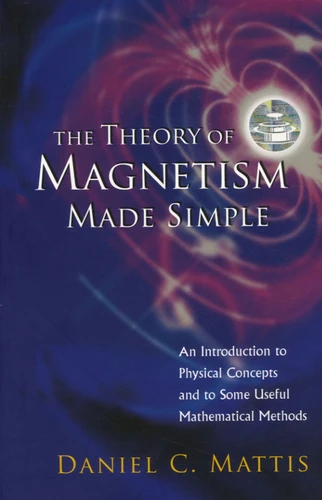The Theory of Magnetism Made Simple. An Introduction to Physical Concepts and to Some Useful Mathematical Methods
Par :Formats :
- Paiement en ligne :
- Livraison à domicile ou en point Mondial Relay indisponible
- Retrait Click and Collect en magasin gratuit
- Nombre de pages565
- PrésentationBroché
- Poids0.99 kg
- Dimensions16,5 cm × 25,0 cm × 2,9 cm
- ISBN981-238-671-8
- EAN9789812386717
- Date de parution01/12/2006
- ÉditeurWorld Scientific Publishing
Résumé
This new version of a classic updates much of the material in earlier editions, including the first chapter, on the history of the field. Important modifications reflect major discoveries of the past decades. A historical perspective is maintained throughout. The reader is drawn into the process of discovery : starting with a phenomenon, finding plausible explanations and competing theories - and finally, the solution.
The theory of magnetism is practically a metaphor for theoretical physics. The very first quantum many-body theory (Bethe's ansatz) was devised for magnetic chains, just as mean-field theory was invented a century ago by Weiss to explain Curies Law. The first two chapters of this book are immensely readable, taking us from prehistory to the "spin valves" of the most recent past. Topics in subsequent chapters include : angular momenta and spin (Chapter 3), quantum theory of simple systems, followed by increasingly technical insights into ordered and random systems, thermal fluctuations, phase transitions, chaos and the like.
Contemporary developments in nanotechnology now seek to take advantage of the electron's spin as well as of its charge. The time is not far off when nano-circuits made entirely of silicon exhibit such many-body properties as superconductivity or ferromagnetism - without any superconducting materials or magnetic ions being present. The reader of this book will be prepared for such exotic twenty-first century applications.
The theory of magnetism is practically a metaphor for theoretical physics. The very first quantum many-body theory (Bethe's ansatz) was devised for magnetic chains, just as mean-field theory was invented a century ago by Weiss to explain Curies Law. The first two chapters of this book are immensely readable, taking us from prehistory to the "spin valves" of the most recent past. Topics in subsequent chapters include : angular momenta and spin (Chapter 3), quantum theory of simple systems, followed by increasingly technical insights into ordered and random systems, thermal fluctuations, phase transitions, chaos and the like.
Contemporary developments in nanotechnology now seek to take advantage of the electron's spin as well as of its charge. The time is not far off when nano-circuits made entirely of silicon exhibit such many-body properties as superconductivity or ferromagnetism - without any superconducting materials or magnetic ions being present. The reader of this book will be prepared for such exotic twenty-first century applications.
This new version of a classic updates much of the material in earlier editions, including the first chapter, on the history of the field. Important modifications reflect major discoveries of the past decades. A historical perspective is maintained throughout. The reader is drawn into the process of discovery : starting with a phenomenon, finding plausible explanations and competing theories - and finally, the solution.
The theory of magnetism is practically a metaphor for theoretical physics. The very first quantum many-body theory (Bethe's ansatz) was devised for magnetic chains, just as mean-field theory was invented a century ago by Weiss to explain Curies Law. The first two chapters of this book are immensely readable, taking us from prehistory to the "spin valves" of the most recent past. Topics in subsequent chapters include : angular momenta and spin (Chapter 3), quantum theory of simple systems, followed by increasingly technical insights into ordered and random systems, thermal fluctuations, phase transitions, chaos and the like.
Contemporary developments in nanotechnology now seek to take advantage of the electron's spin as well as of its charge. The time is not far off when nano-circuits made entirely of silicon exhibit such many-body properties as superconductivity or ferromagnetism - without any superconducting materials or magnetic ions being present. The reader of this book will be prepared for such exotic twenty-first century applications.
The theory of magnetism is practically a metaphor for theoretical physics. The very first quantum many-body theory (Bethe's ansatz) was devised for magnetic chains, just as mean-field theory was invented a century ago by Weiss to explain Curies Law. The first two chapters of this book are immensely readable, taking us from prehistory to the "spin valves" of the most recent past. Topics in subsequent chapters include : angular momenta and spin (Chapter 3), quantum theory of simple systems, followed by increasingly technical insights into ordered and random systems, thermal fluctuations, phase transitions, chaos and the like.
Contemporary developments in nanotechnology now seek to take advantage of the electron's spin as well as of its charge. The time is not far off when nano-circuits made entirely of silicon exhibit such many-body properties as superconductivity or ferromagnetism - without any superconducting materials or magnetic ions being present. The reader of this book will be prepared for such exotic twenty-first century applications.

